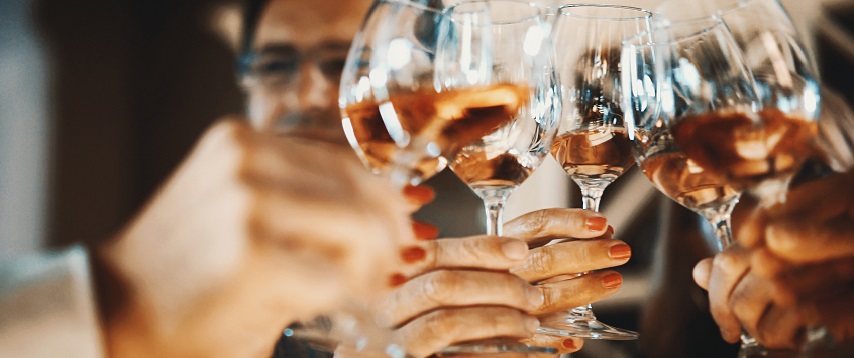Keep the holidays safe with alcohol service training

When guests celebrate in your restaurant, you’re responsible for their safety, especially when it comes to serving alcohol.
While you want to facilitate your guests’ good time, letting them over-imbibe risks their safety and your business. There are strategies to mitigate that risk, however. By learning smart alcohol service techniques, you and your staff can ensure that celebrations in your establishment are festive and safe.
“The best thing you can do to ensure safe alcohol service over the holidays is make sure staff and managers are certified in ServSafe Alcohol, period,” says Trevor Estelle, VP, ServSafe Alcohol & Regulatory Services for the National Restaurant Association.
Other tips from the ServSafe Alcohol training program include:
Know how—and how much—alcohol affects blood alcohol content (BAC) and behavior. BAC and how it affects the brain can vary depending on a person’s gender, weight, age, mood, and other factors, but when BAC typically reaches a certain level, the brain stops functioning normally. “This causes physical and behavioral changes including relaxed inhibitions, impaired judgment, slowed reaction time, and lack of motor coordination,” Estelle says. All 50 states use BAC to define when a person is legally intoxicated to operate a motor vehicle, which is .08 percent in most cases.
Teach staff to use a combination of strategies to prevent them from over-serving customers. When bartenders and servers are most attentive to guests and attuned to their needs, they’re more likely to spot signs that guests may be consuming too much.
-
Calculate the number of standard drinks in the drinks your serve. Standard drinks are 1.5 oz. of 80-proof liquor in a mixed drink; a 1-oz. shot of 100-proof liquor; a 5-oz. glass of wine that contains 12% alcohol by volume (ABV); or a 12-oz. beer that’s 5% ABV. You may serve pint glasses of a holiday ale, for example, many of which are 12% ABV, which would be the equivalent of about three standard drinks.
-
Always pour measured shots of alcohol when mixing cocktails. Not only will that save you money, but it ensures that drinks are consistent, and bartenders know how many “standard” drinks they’re pouring.
-
Have bartenders and servers count or tally drinks served. Mark the tally on a coaster or napkin, on the back of a guest check, on a printed receipt placed in front of the customer each time a new drink is served, or through your POS system.
-
Keep guests hydrated. Always serve a glass of water with drinks. Dehydration will make guests thirsty, and they should have water to quench it, not more alcohol.
-
Offer guests food if they’re ordering a lot of beverage alcohol. Foods high in protein and fat take longer to digest and can slow the movement of alcohol into the bloodstream.
-
Find ways to slow service to guests who may be over-imbibing. ServSafe Alcohol offers a number of techniques that bartenders and servers can use to slow down or limit service without upsetting guests.
Observe customers’ behavior. Bartenders, servers and managers should be attentive enough to notice changes in behavior that indicate a patron is becoming intoxicated.
Take steps to diffuse potentially difficult situations before and after stopping service to intoxicated customers. “ServSafe Alcohol training not only offers these steps, but also provides the skills and confidence to follow through with it,” Estelle says. “The training provides communication techniques such as how to avoid judgmental language and how to express concern, show empathy, and be firm.”
Do your best to make sure guests get home safely. Ask ahead of time if a party of guests has a designated driver. Offer to call a cab or ride share service for intoxicated guests. You cannot use physical force to prevent a person from driving, nor can you take their car keys. However, if a guest still insists on driving, jot down pertinent information such as the vehicle make and model, license plate number, and direction of travel, and call the police to let them know.
ServeSafe Alcohol takes a deeper dive into all these strategies and techniques, and can provide your staff with the tools, skills, and confidence needed to keep guests safe while celebrating the holidays